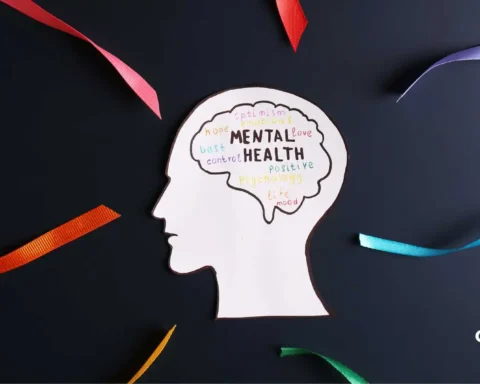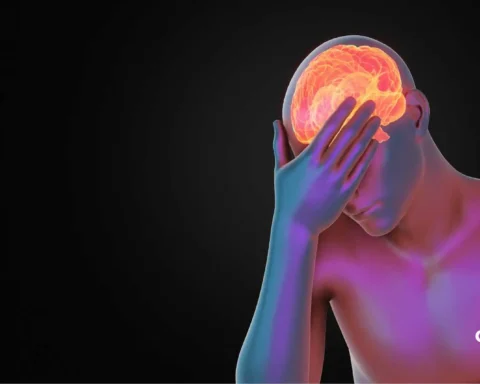Low blood sugar, or hypoglycemia, is a condition that can affect adults with diabetes or other health issues. Recognizing low blood sugar symptoms in adults is vital for prompt intervention to prevent potentially dangerous complications.
In this comprehensive article, we will explore the wide spectrum of low blood sugar symptoms in adults, categorizing them into two key sections: early warning signs and more pronounced effects. By gaining a deeper understanding of these symptoms, individuals can be better equipped to recognize and manage episodes of low blood sugar, ultimately ensuring their overall well-being.
Table of Contents
Understanding Hypoglycemia
Hypoglycemia in adults refers to a medical condition where the blood sugar level drops to a level that is lower than normal. This condition is often associated with diabetes and can lead to various symptoms and complications. It is essential for adults with diabetes to monitor and manage their blood sugar levels to prevent hypoglycemia and its adverse effects.
Types of Hypoglycemia
Hypoglycemia can be categorized into different types based on its causes and underlying conditions. Some of the common types of hypoglycemia include:
Reactive Hypoglycemia: This type occurs a few hours after eating, typically due to excessive insulin release in response to a meal, especially one high in carbohydrates. It can lead to symptoms like shakiness, sweating, and irritability.
Fasting Hypoglycemia: Fasting hypoglycemia happens when blood sugar levels drop after an extended period without food, often due to conditions like prolonged fasting, certain medications, or critical illnesses in people without diabetes, which increases the risk of hypoglycemia.
Alcohol-Induced Hypoglycemia: Excessive alcohol consumption can lead to low blood sugar, as it can interfere with the liver’s ability to release glucose into the bloodstream. This type is common in individuals with alcohol use disorder.
Medication-Induced Hypoglycemia: Some medications, particularly those used to manage diabetes (like insulin or sulfonylureas), can cause hypoglycemia if not taken in the correct dose or if the timing of medication and meals is not coordinated correctly.
Exercise-Induced Hypoglycemia: Strenuous or prolonged physical activity can lead to low blood sugar levels, especially in individuals with diabetes. This type of hypoglycemia can occur during or after exercise.
Non-Diabetic Hypoglycemia: In rare cases, individuals who do not have diabetes can experience episodes of low blood sugar due to underlying medical conditions, such as hormone deficiencies, tumors, or certain enzyme deficiencies.
Nocturnal Hypoglycemia: Nocturnal hypoglycemia refers to episodes of low blood sugar that occur during the night while an individual is asleep. This condition is particularly significant for people with diabetes, as it can lead to disturbances in sleep patterns, including night sweats, nightmares, and morning headaches.
Each type of hypoglycemia may require different approaches to management and treatment, depending on its underlying cause. It is vital for individuals who experience recurring hypoglycemic episodes to consult a healthcare professional for proper evaluation and guidance.
Causes of Hypoglycemia
Hypoglycemia can have various causes, with the most common being related to people with Type 2 diabetes. For people with diabetes, taking too much insulin or other glucose-lowering medications, delaying or missing meals, or engaging in unusually vigorous physical activity without adjusting their diabetes medication can lead to low blood glucose levels.
Beyond diabetes, other potential causes include certain medical conditions, excessive alcohol consumption, hormonal imbalances, critical illnesses, or rare genetic disorders. Identifying and addressing the underlying cause is crucial in effectively managing hypoglycemia in adults and preventing its recurrence.
Early Warning Signs
Early warning signs of hypoglycemia in people indicate that blood sugar levels are dropping below normal. These hypoglycemia symptoms serve as a signal for the body to take action and raise blood sugar levels, and they vary from person to person.
Shakiness and Tremors: One of the earliest signs of low blood sugar or mild hypoglycemia is shakiness and trembling, often affecting the hands and fingers. These fine motor tremors result from the brain’s response to insufficient glucose, signalling the need for an energy boost.
Rapid Heartbeat (Tachycardia): Low blood sugar can increase heart rate, leading to heart palpitations or a pounding sensation in the chest. The body releases stress hormones like adrenaline in an attempt to raise blood sugar levels.
Sweating: Profuse sweating, even in cool conditions, is a common symptom of hypoglycemia. It occurs as the body perspires in response to the stress hormones released when blood sugar drops too low.
Nervousness and Anxiety: Feeling anxious, nervous, or agitated is a frequent emotional response to low blood sugar. These feelings can be accompanied by a sense of impending doom or discomfort.
Irritability and Mood Swings: Hypoglycemia often leads to irritability and mood swings, causing individuals to become easily agitated or even angry. These mood changes can strain personal relationships.
Hunger: A sudden, intense hunger is the body’s way of signalling the need for more glucose. Cravings for sugary or carbohydrate-rich foods are common during hypoglycemic episodes.
Difficulty Concentrating: Cognitive symptoms include difficulty concentrating, mental fogginess, and confusion. These symptoms can impact work, school, and daily activities, making it challenging to focus.
Blurred Vision: Visual disturbances, such as blurred vision, can occur as a result of low blood sugar. This can make tasks like reading and driving difficult and dangerous.
Tingling Sensation: A tingling sensation, often in the lips and tongue, can be an early sign of hypoglycemia. This symptom results from the impact of low glucose on nerve function.
Fatigue: Fatigue and weakness are common during episodes of low blood sugar. Individuals may feel physically drained and lacking in energy.
More Pronounced Effects
As blood sugar levels continue to drop, the symptoms of hypoglycemia become more pronounced. These severe symptoms can lead to life-threatening situations which need emergency medical care.
Dizziness and Lightheadedness: Dizziness and lightheadedness may intensify as blood sugar levels decrease. This can lead to difficulty maintaining balance and coordination.
Headache: Hypoglycemia can trigger headaches, often described as throbbing or pounding. The headache may be accompanied by nausea.
Confusion and Disorientation: As blood sugar levels decline, confusion and disorientation can intensify, making it challenging to comprehend one’s surroundings and situation.
Seizures: In severe cases of low blood sugar, seizures can occur. Seizures are a medical emergency and require immediate attention.
Loss of Consciousness: Profound hypoglycemia can lead to a loss of consciousness, also known as diabetic coma. Immediate medical intervention is essential in these cases.
Behavioural Changes: Individuals experiencing severe hypoglycemia may exhibit unusual behaviour, such as aggression, combativeness, or even bizarre actions. This can be distressing for both the affected person and those around them.
Slurred Speech: Hypoglycemia can lead to slurred speech, similar to the effects of alcohol intoxication. Incoherent or garbled speech can be a sign of extremely low blood sugar.
Weakness and Muscle Tremors: Muscle weakness and more pronounced tremors may occur as the body’s energy reserves deplete. This can make mobility and coordination challenging.
Unresponsiveness: In severe cases of hypoglycemia, individuals may become unresponsive, unable to wake or respond to stimuli. Immediate medical assistance is critical in such situations.
Coma: The most severe consequence of unaddressed hypoglycemia is a diabetic coma. This is a life-threatening state of unconsciousness requiring immediate emergency care.
Diagnosis of Hypoglycemia
Diagnosing hypoglycemia involves a combination of clinical evaluation, medical history, and specific laboratory tests. The process aims to confirm that an individual’s symptoms are due to low blood sugar levels. Here are the key methods used for diagnosing hypoglycemia:
Medical History and Symptoms: The first step in diagnosing hypoglycemia is to gather a detailed medical history and inquire about the individual’s symptoms. Symptoms such as shakiness, sweating, confusion, irritability, and difficulty concentrating are indicative of low blood sugar.
Blood Glucose Testing: To confirm hypoglycemia, healthcare providers measure the person’s blood sugar levels. A blood sample is taken by using a blood glucose meter and insulin pump, typically when the individual is experiencing symptoms or during a fasting period. If the glucose level for a person is below 99 milligrams per deciliter (mg/dL), it suggests hypoglycemia, whereas an average level or healthy range or normal range is 100 to 125 milligrams per deciliter (mg/dL).
Fasting Test: The fasting test involves monitoring blood sugar levels after an overnight fast. The person fasts for a specific period (often 8 hours), and blood samples are taken at intervals to measure glucose levels. A drop in blood sugar levels during fasting indicates fasting hypoglycemia.
Oral Glucose Tolerance Test (OGTT): An OGTT is performed by having the person fast overnight and then consume a glucose solution. Blood sugar levels are measured at regular intervals after drinking the solution. A significant drop in blood sugar, typically below 99 mg/dL, can suggest reactive hypoglycemia.
HbA1c Test: While the HbA1c test is typically used to assess long-term blood sugar control in diabetes, it can also provide information about recurring hypoglycemia episodes. A low HbA1c level may indicate a history of low blood sugar events.
Whipple’s Triad: This clinical tool helps diagnose hypoglycemia by evaluating three criteria:
- Symptoms consistent with low blood sugar
- Documented low blood sugar levels during symptoms
- Reversal of symptoms after glucose administration. When all three conditions are met, hypoglycemia is strongly indicated.
Continuous Glucose Monitoring (CGM): In some cases, continuous glucose monitoring systems are used to track blood sugar levels continuously over several days. CGM provides a detailed picture of glucose fluctuations, especially during sleep and after meals.
Diagnosing the specific type of hypoglycemia (e.g., reactive, fasting, or alcohol-induced) is essential for tailoring treatment approaches. If an underlying condition or medication is found to be causing hypoglycemia, addressing that issue is a crucial part of the diagnostic process. A thorough evaluation and diagnosis by a diabetes educator is critical to ensure the appropriate management and prevention of hypoglycemia and its related symptoms.
Management and Prevention of Low Blood Sugar Symptoms in Adults
Properly managing and preventing low blood sugar episodes is essential for individuals at risk. Strategies include:
Monitor Blood Sugar: Continuous glucose monitors, especially if you have diabetes or other conditions that can lead to hypoglycemia. Blood glucose monitors help in checking glucose levels. A blood glucose episode can be recorded 15 minutes after 15 grams of carbohydrate intake. This is called the 15-15 rule.
Balanced Diet: Consume a balanced diet with complex carbohydrates, fibre, lean proteins, fast-acting carbohydrates, and healthy fats to help maintain stable blood sugar levels.
Regular Meals and Snacks: Avoid skipping meals, and include healthy snacks to prevent prolonged periods without food.
Medication Management: If you have diabetes, follow your healthcare provider’s recommendations regarding diabetes medicines or insulin use.
Physical Activity: Engage in regular physical activity, but be mindful of its impact on blood sugar levels. Monitor and adjust as needed.
Carry Snacks: Keep fast-acting sources of glucose, like fruit juice, soft drinks, orange juice, or glucose tablets, to get extra glucose into the bloodstream.
Inform Others: Ensure that family members, friends, or colleagues are aware of your condition and how to help in case of a severe episode.
Ways to Treat Low Blood Glucose Levels
Treating hypoglycemia involves raising blood sugar levels to alleviate the symptoms and prevent potentially dangerous complications. The approach to medical treatment depends on the severity of the low blood sugar episode and the individual’s underlying health condition. Here are the essential methods for treating hypoglycemia:
Oral Carbohydrates: The first-line treatment for mild to moderate hypoglycemia is the consumption of fast-acting carbohydrates as an energy source. This can include glucose tablets, fruit juice, regular (non-diet) soda, sugary food, or any source of simple sugars. These carbohydrates quickly elevate blood sugar levels and alleviate symptoms.
Glucose Gel or Paste: For individuals who may have difficulty swallowing or are unconscious, glucose gel or paste can be applied to the inside of the cheeks. The sugar is absorbed through the mucous membranes, rapidly raising blood sugar levels.
Complex Carbohydrates: After the initial treatment with fast-acting carbohydrates, it is essential to follow up with complex carbohydrates, such as whole-grain bread or crackers, to provide longer-lasting energy and help stabilize blood sugar levels.
Continuous Glucose Monitoring (CGM) and Insulin Adjustment: For people with diabetes, CGM systems can provide real-time data on blood sugar levels, allowing for precise insulin dose adjustment in the target range to prevent further hypoglycemic episodes.
Glucagon Injection: In severe cases of hypoglycemia where the individual is unconscious or unable to eat, a glucagon injection or glucagon kits can be administered by a family member, caregiver, or medical professional. Glucagon stimulates the release of stored glucose from the liver, rapidly raising blood sugar levels.
Treatment of Underlying Causes: In cases where hypoglycemia is due to a specific underlying condition, such as an insulinoma (a rare tumor that produces excess insulin), treatment of the underlying cause may be necessary. This could involve surgical removal of the tumor or adjusting medications that contribute to low blood sugar.
Adjusting Medications: For individuals with diabetes, working closely with medical care to adjust the dosage of oral diabetes medication and timing of insulin or other glucose-lowering medications is vital to prevent recurrent hypoglycemia by following a proper diabetes management plan.
Lifestyle Modifications: Lifestyle changes play a significant role in managing hypoglycemia. For individuals with reactive hypoglycemia, eating regular, balanced meals and snacks can help prevent blood sugar fluctuations. Reducing alcohol intake and being cautious with strenuous exercise can also help manage hypoglycemia.
It’s essential for individuals who experience recurrent or severe hypoglycemic episodes to consult with healthcare professionals or a diabetes care team to identify the underlying causes and develop a personalized treatment plan. Proper education on recognizing the early signs of hypoglycemia and knowing how to respond is essential to manage this condition effectively and prevent future episodes.
Complications of Hypoglycemia
Heart disease and kidney disease are not direct complications of hypoglycemia. Hypoglycemia, or low blood sugar, primarily affects the brain and can lead to symptoms such as confusion, seizures, and unconsciousness if left untreated or if it becomes severe. While hypoglycemia itself does not directly cause heart stroke or kidney failure, there can be indirect relationships.
Hypoglycemic Unawareness
Hypoglycemia unawareness is a condition that affects some patients with Type 1 diabetes. It occurs when people with hypoglycemia unawareness become less sensitive to the early warning signs of low blood sugar, such as shakiness or sweating.
As a result, they may not recognize the need for prompt intervention, potentially leading to severe hypoglycemic episodes. This condition can be dangerous, making it crucial for those affected to work closely with healthcare professionals to regain sensitivity to low blood sugar symptoms and effectively manage their diabetes.
Conclusion
In conclusion, this article has provided a comprehensive overview of the low blood sugar symptoms in adults. By categorizing these symptoms into early warning signs and more pronounced effects, we have offered a thorough understanding of how hypoglycemia manifests.
FAQs
Is chocolate good for low blood sugar?
Chocolate can help raise low blood sugar due to its sugar content, but it’s not an ideal choice. Fast-acting sources like glucose tablets or tablespoon of sugar and fruit juice are better options, as they provide a quicker and more reliable increase in blood sugar.
Is rice good for low blood glucose?
Rice, mainly white rice, can cause a rapid spike in blood glucose, making it less suitable for treating low blood sugar. Complex carbohydrates and protein-rich options are better for a sustained and stable increase in blood sugar levels.
Which fruits control sugar?
Certain fruits like berries, apples, and citrus fruits are good choices for helping control blood glucose due to their lower glycemic index and high fibre content. They can help stabilize glucose levels when consumed as part of a balanced diet for individuals with diabetes.
Can low blood sugar make you sleepy?
Yes, low blood sugar can cause drowsiness and fatigue, leading to sleepiness as the brain’s energy supply is compromised. It’s a common symptom of hypoglycemia, and addressing the low blood sugar level typically alleviates this tiredness.









